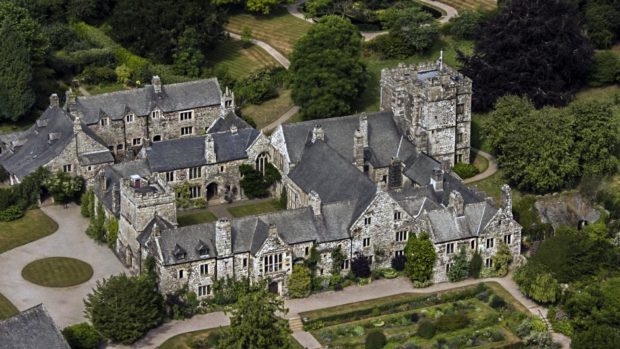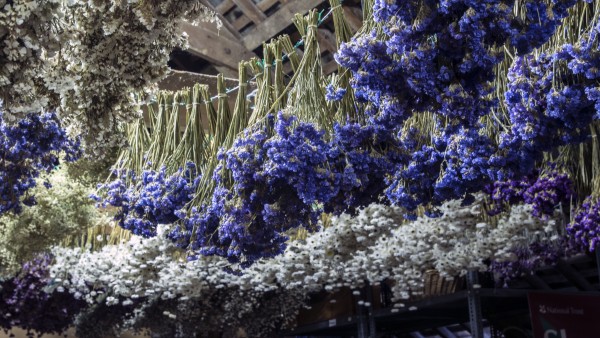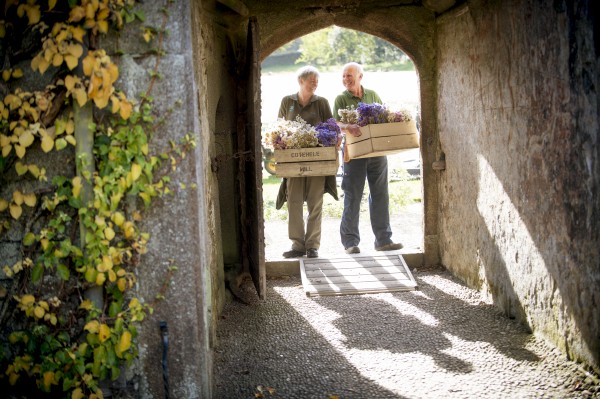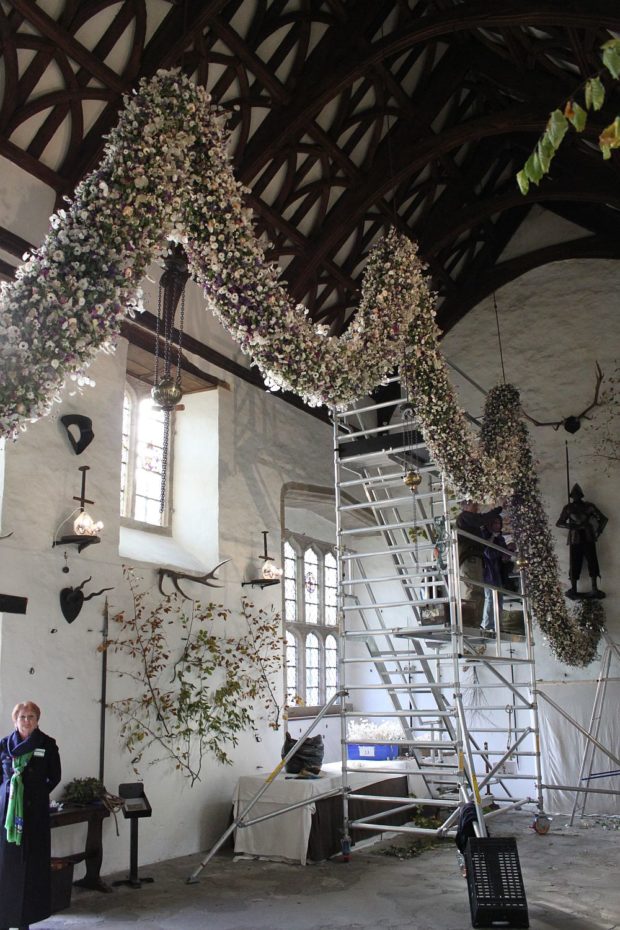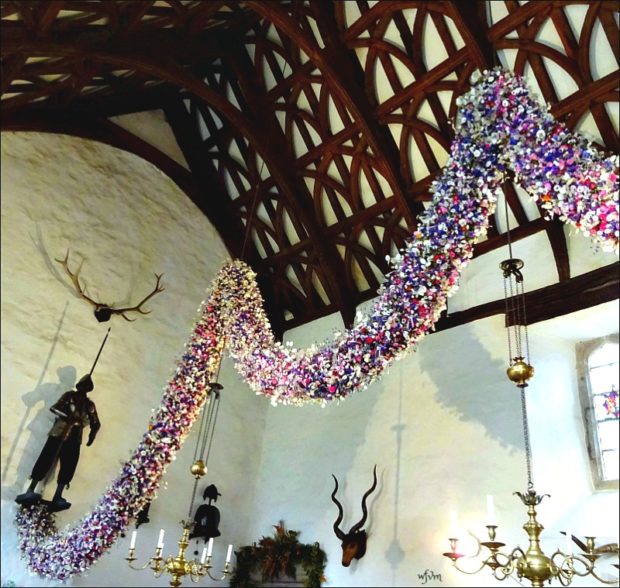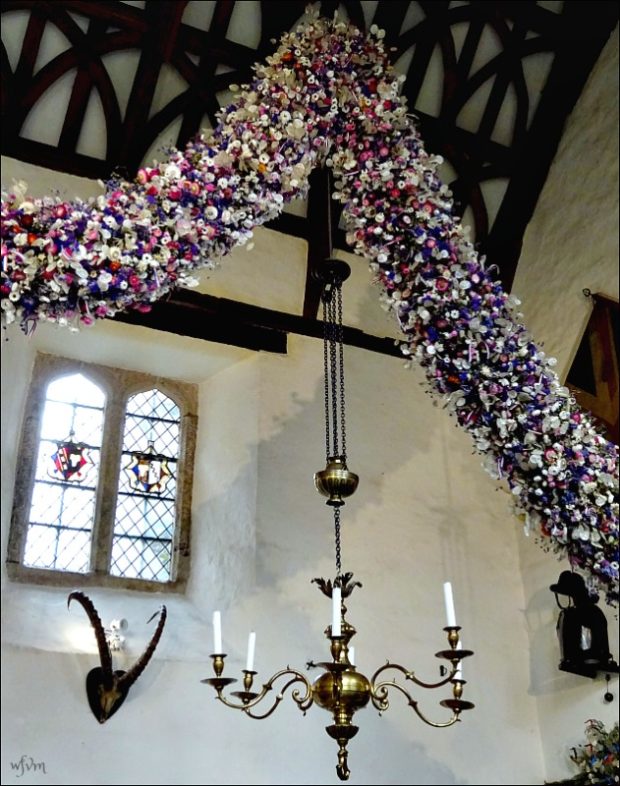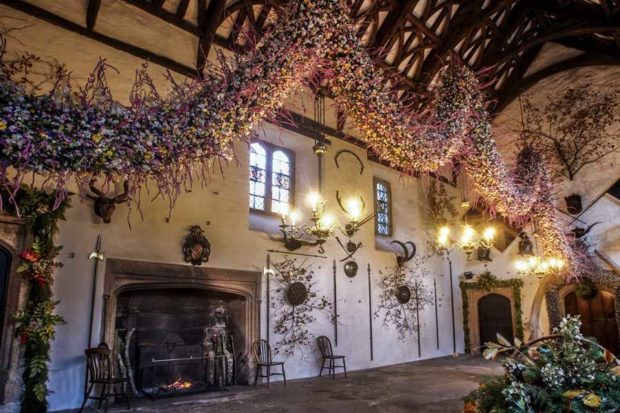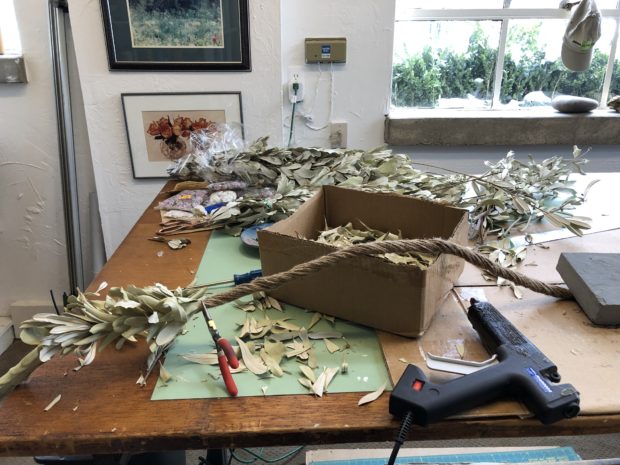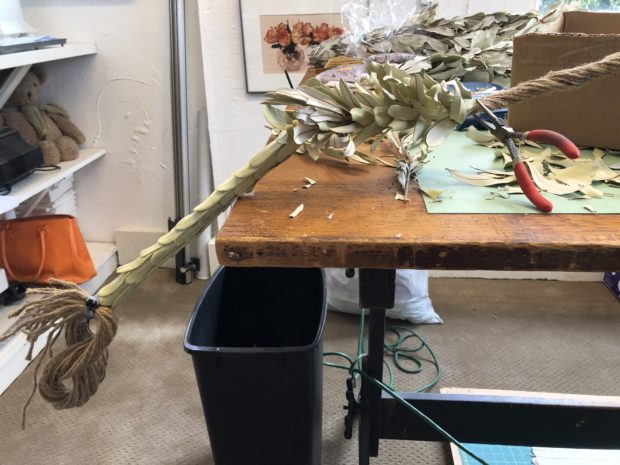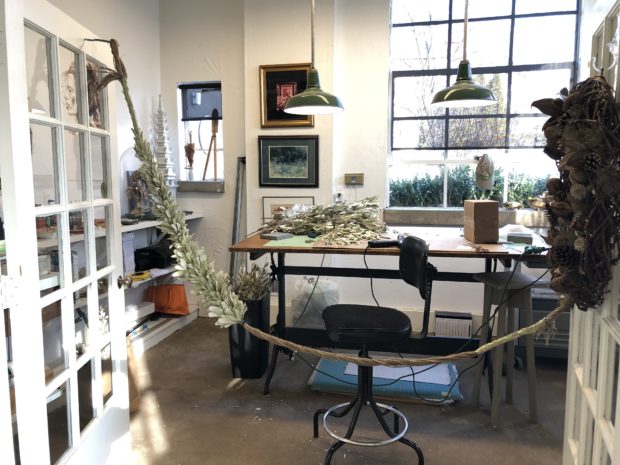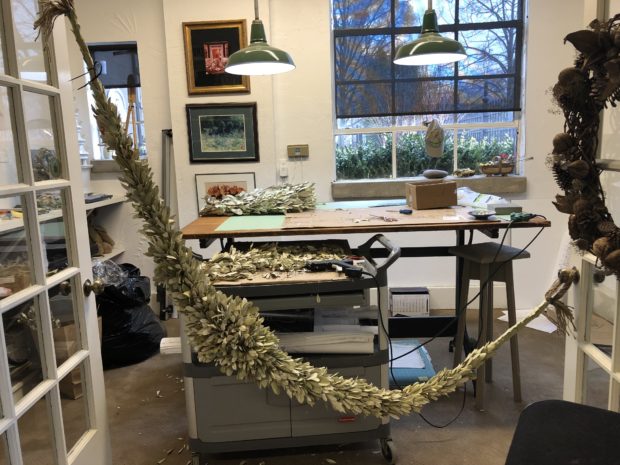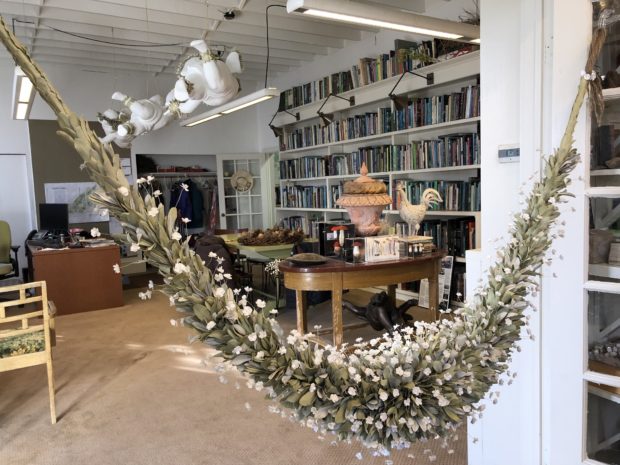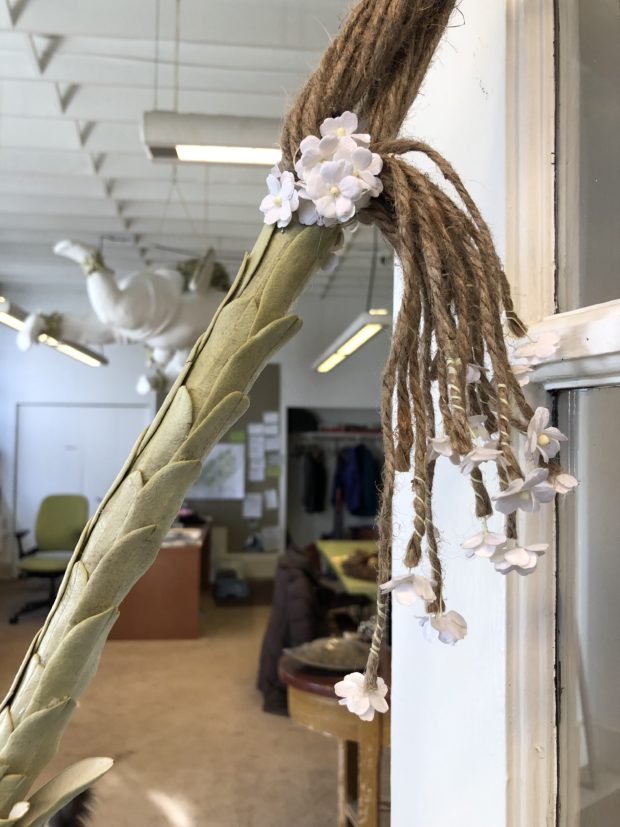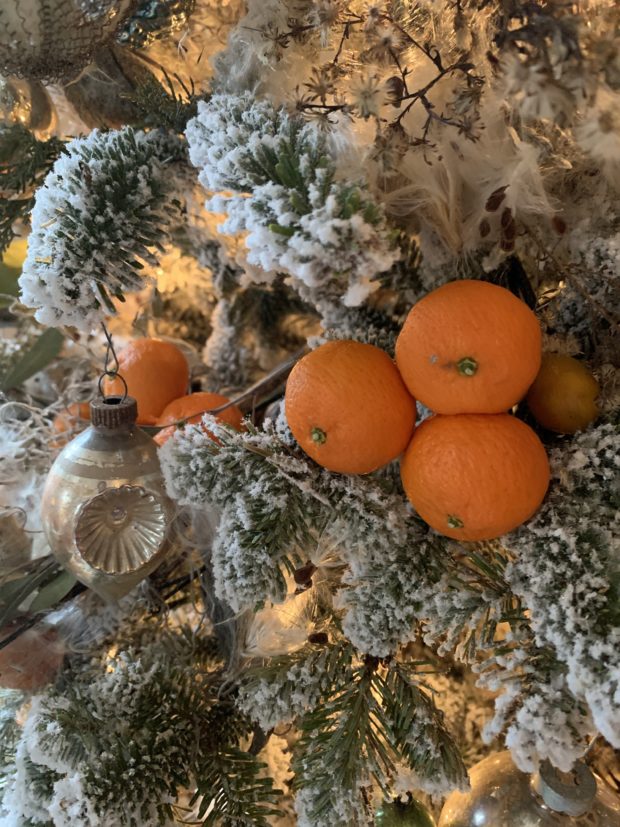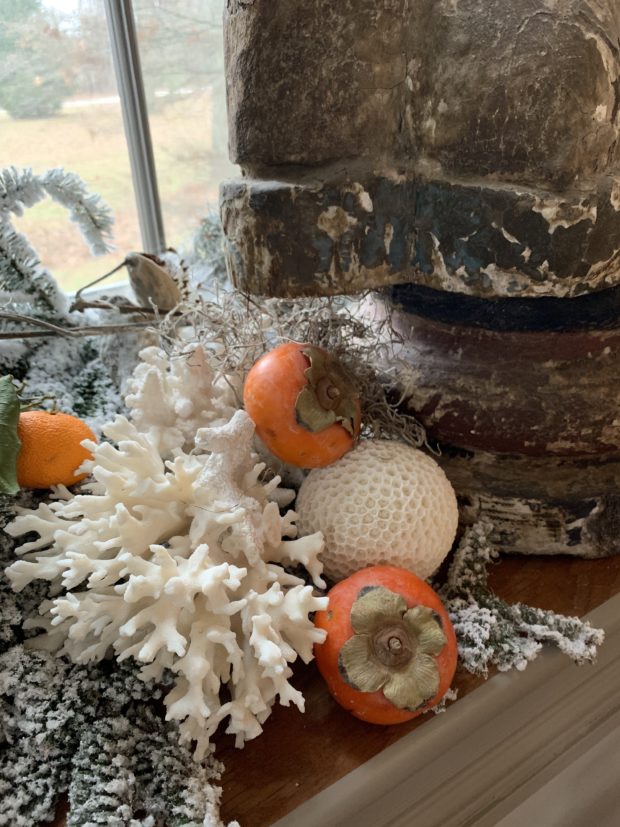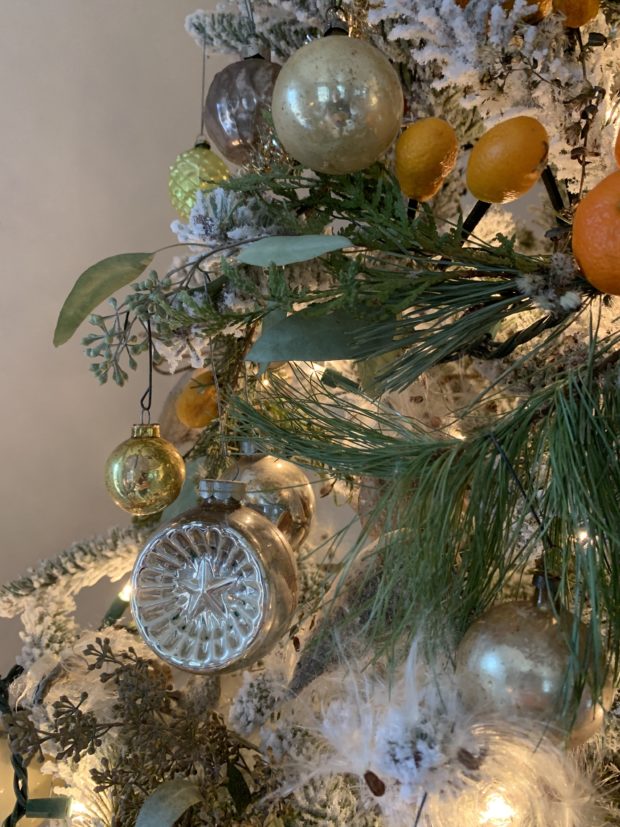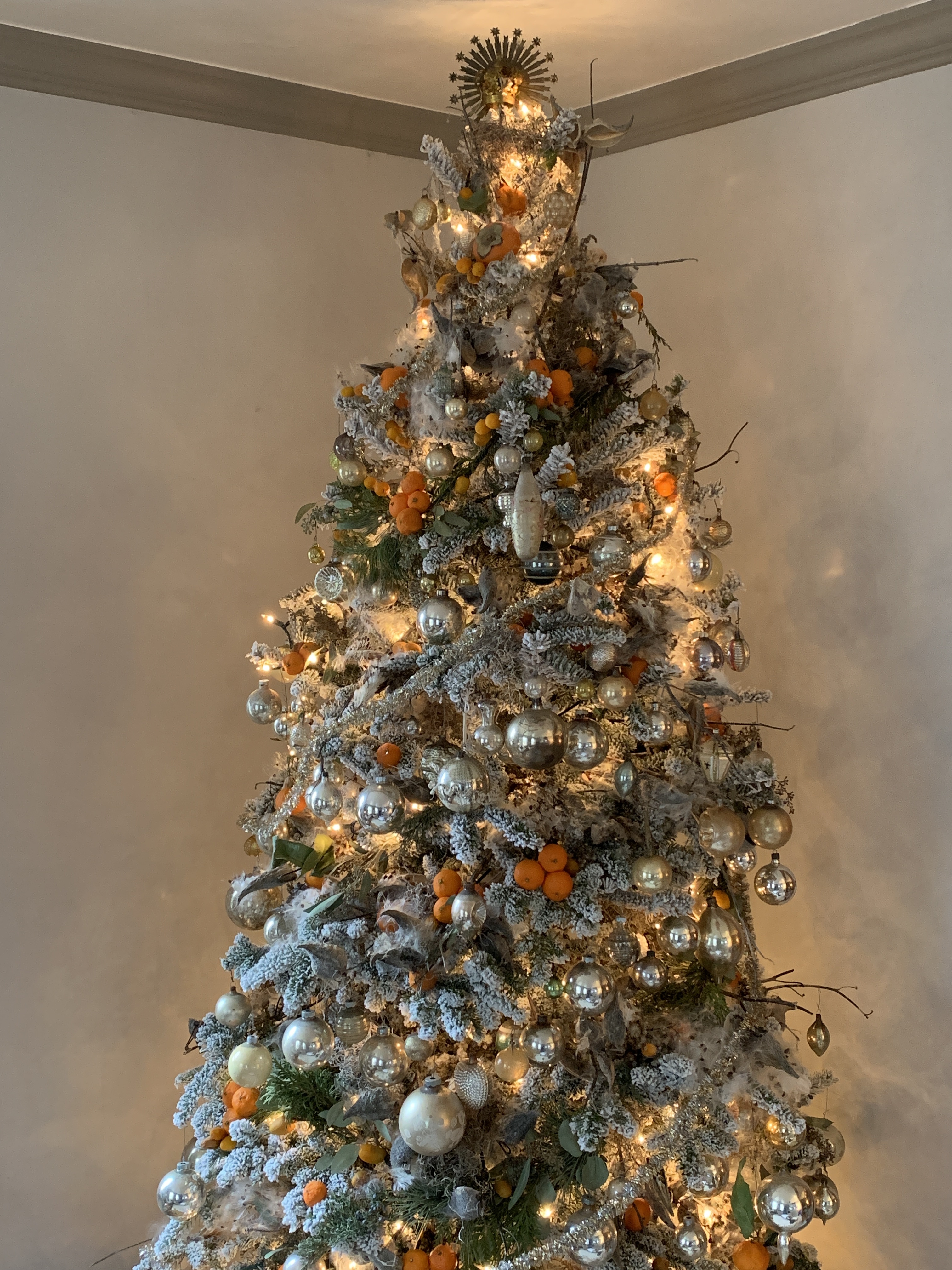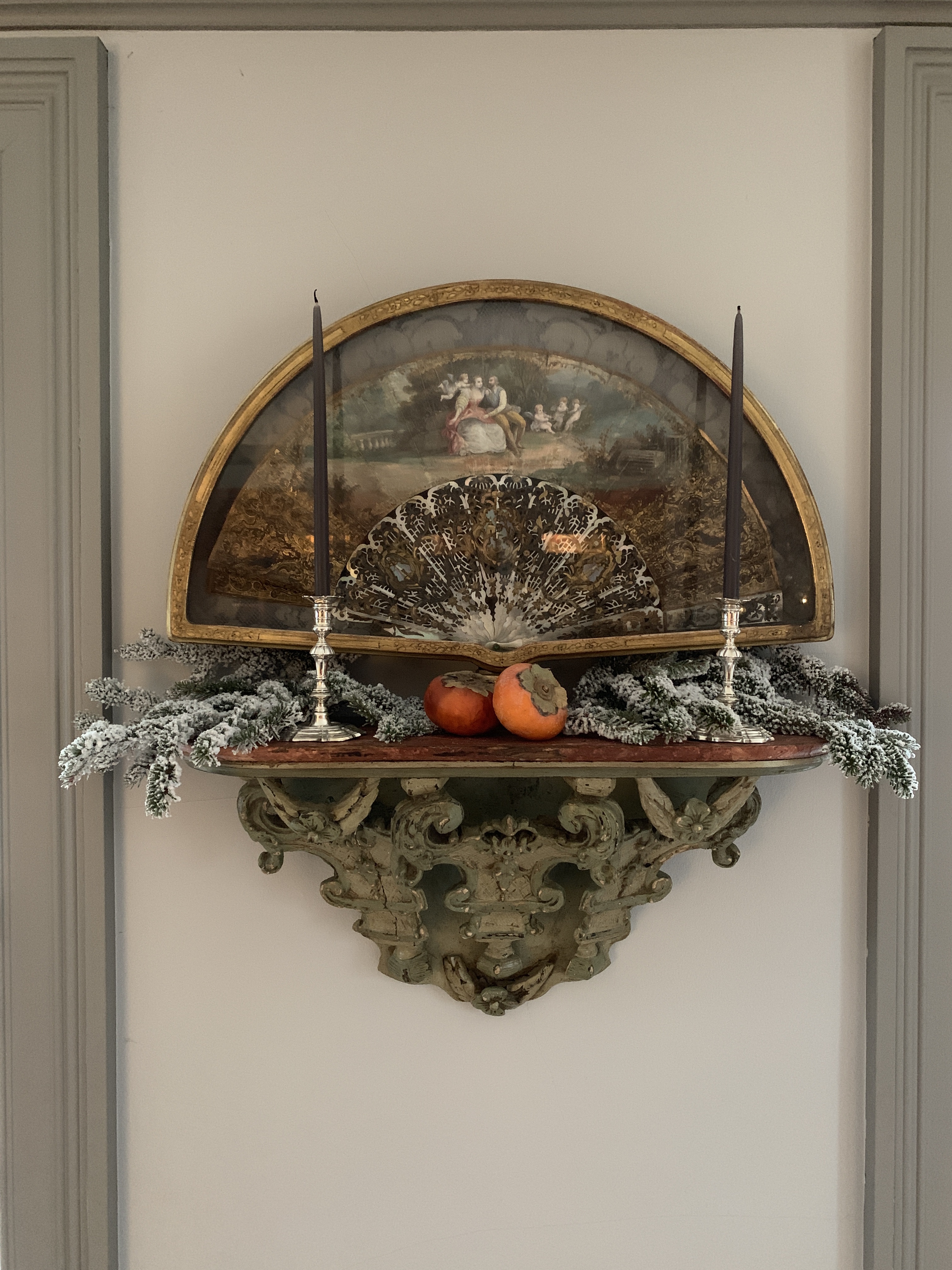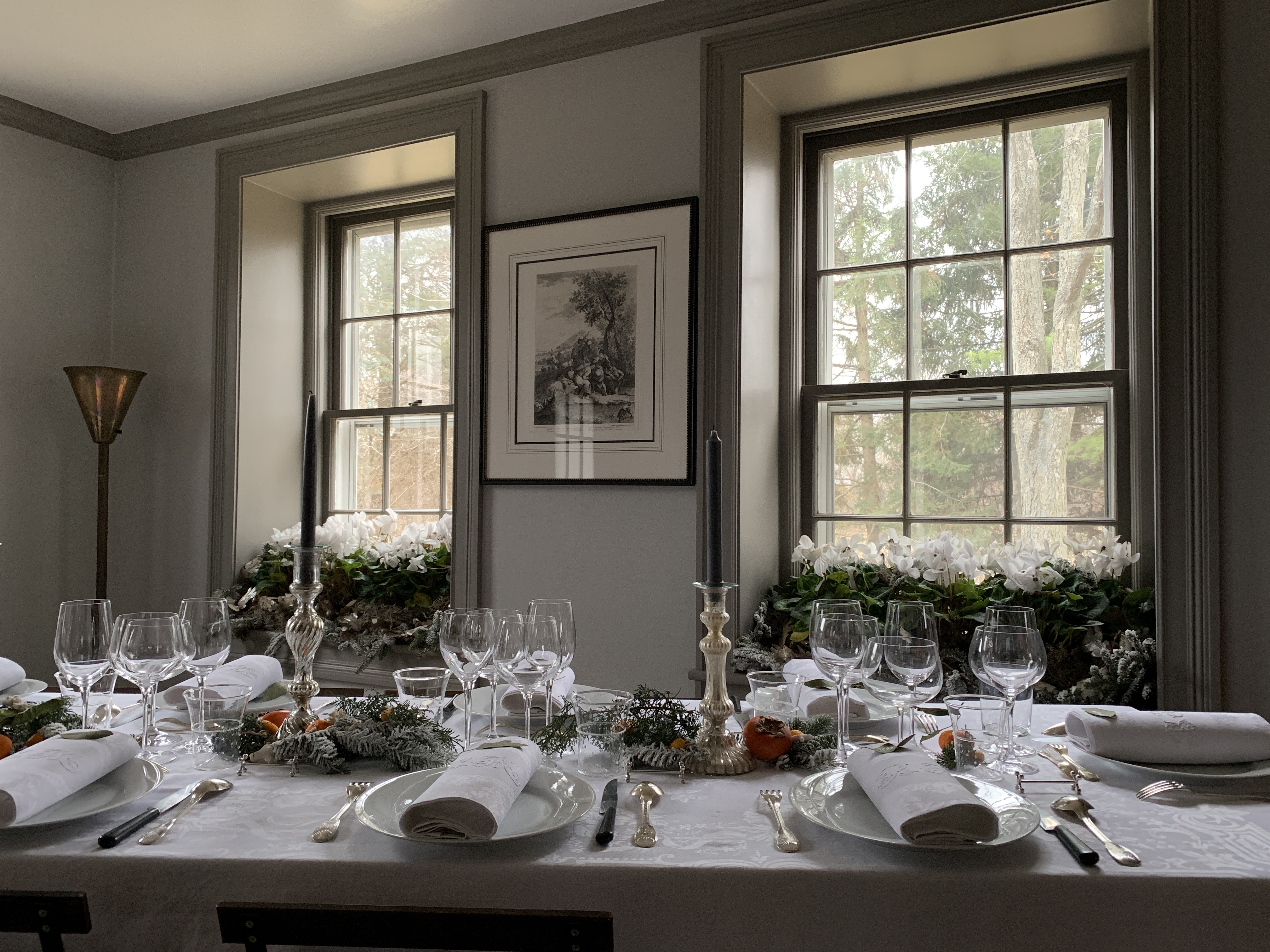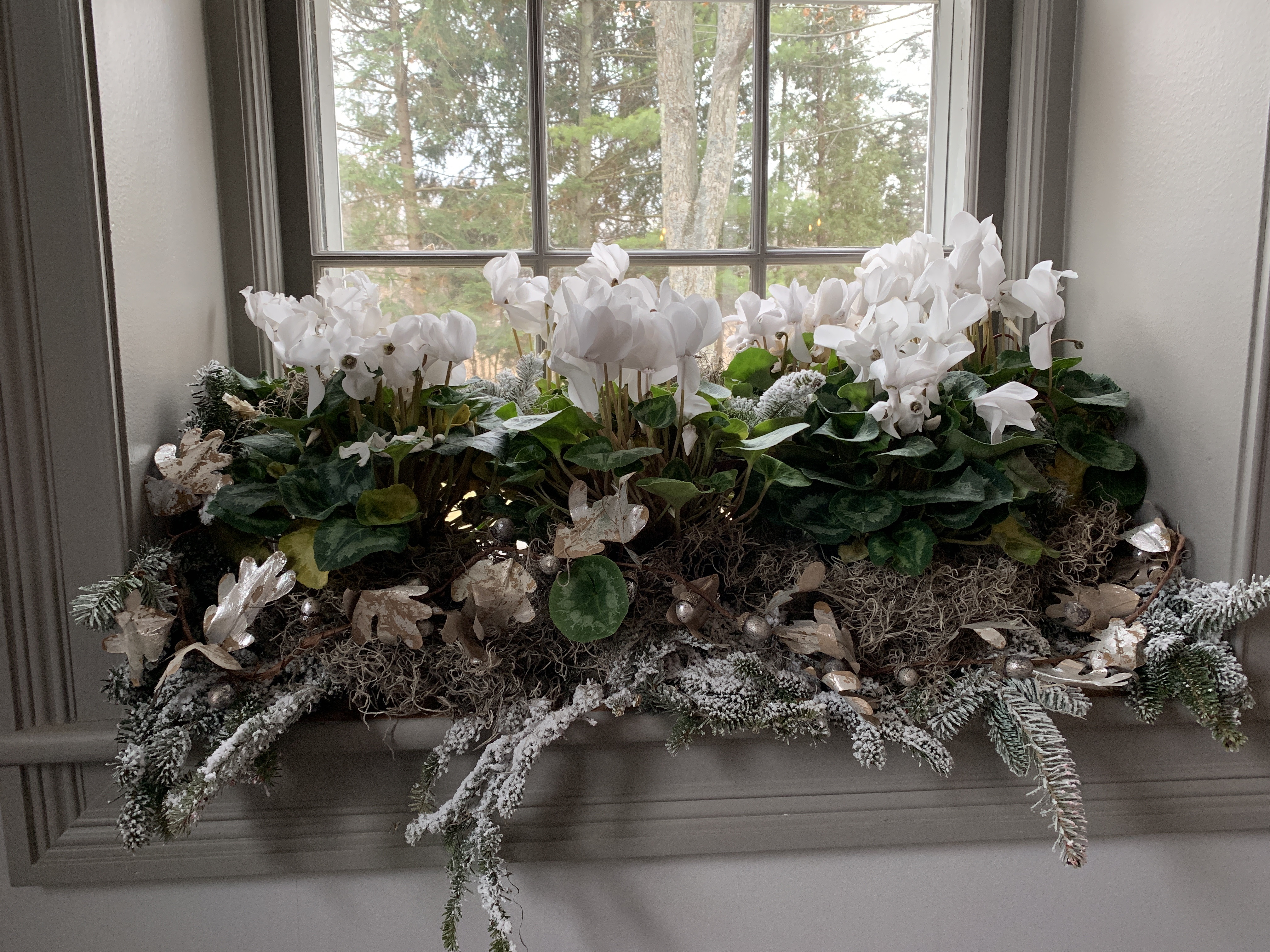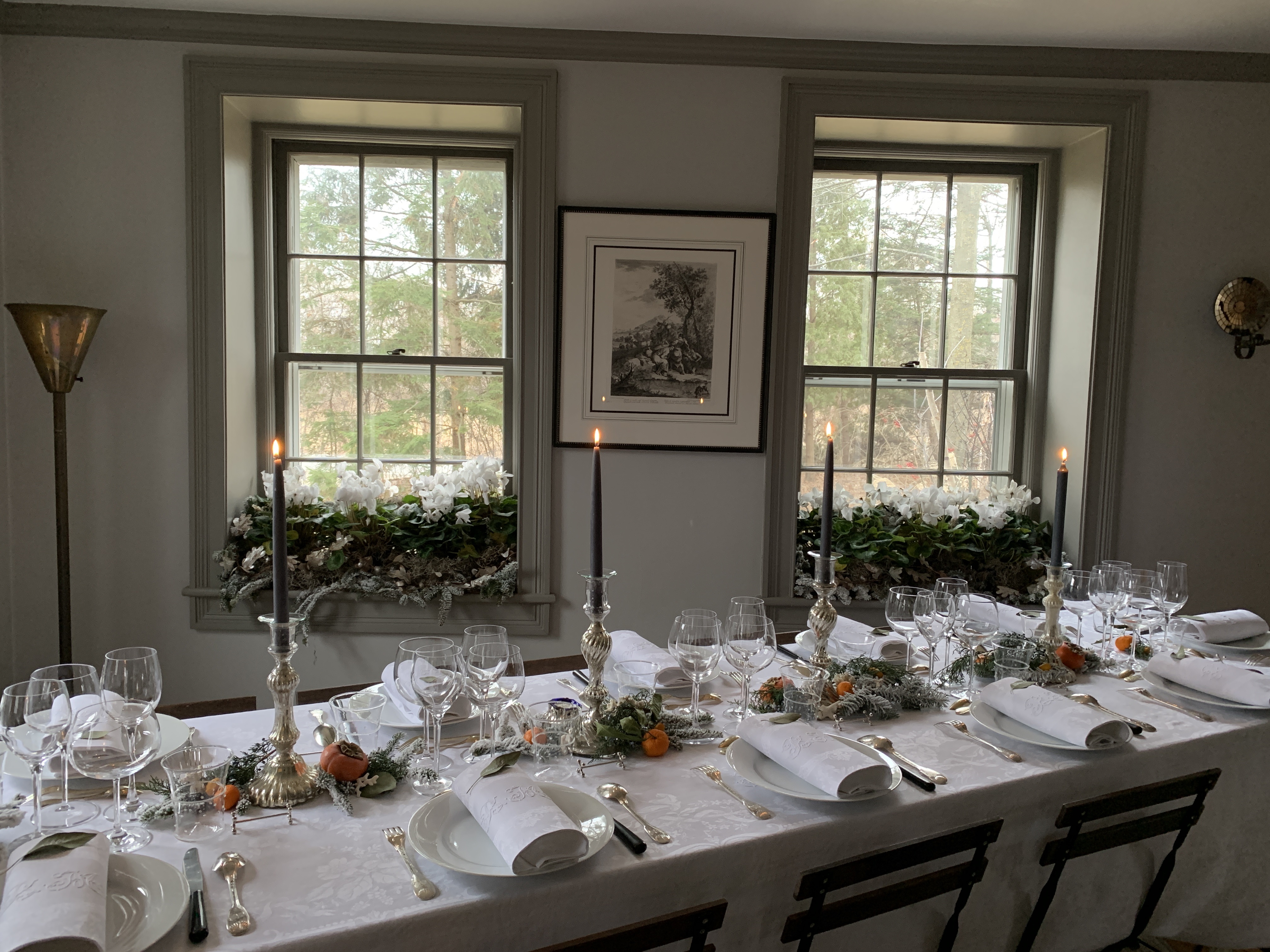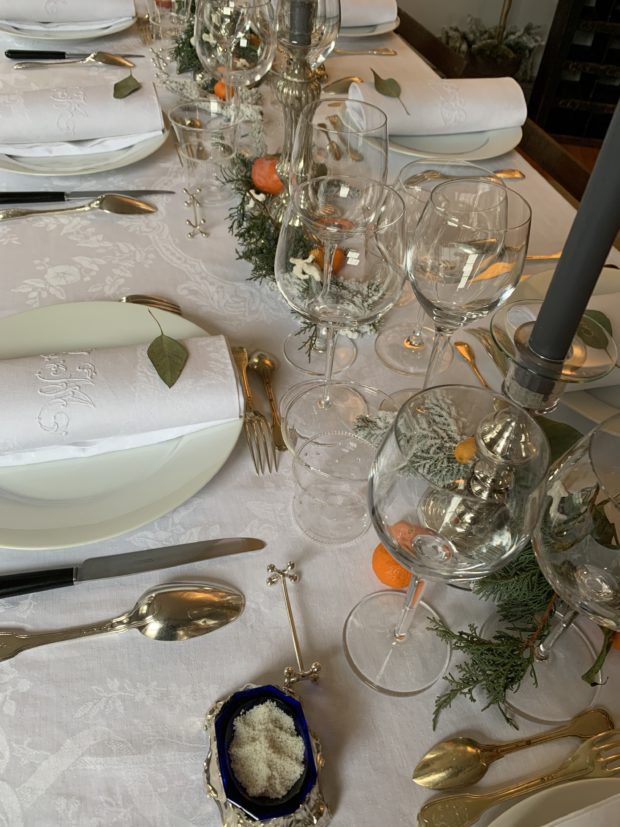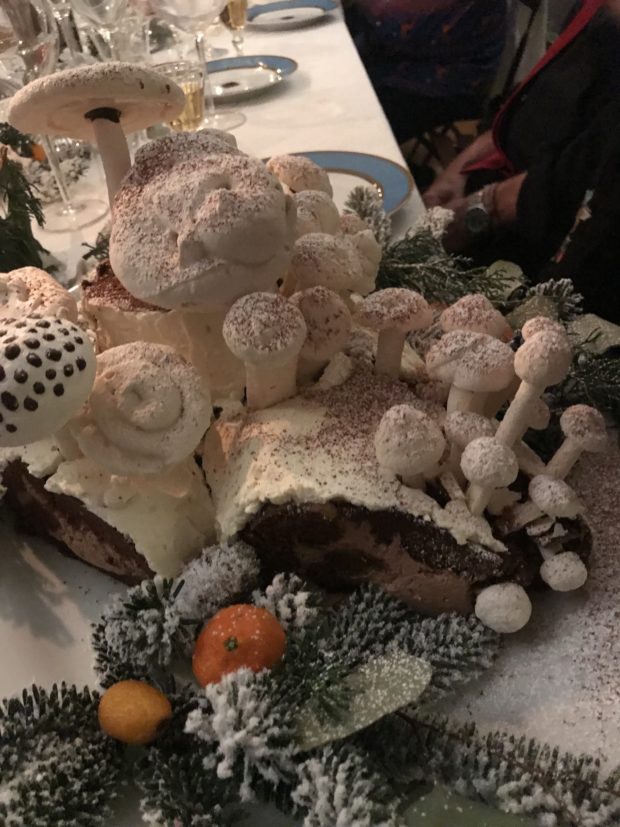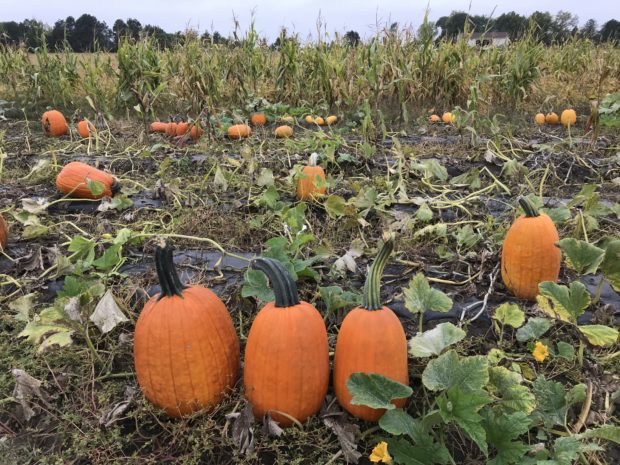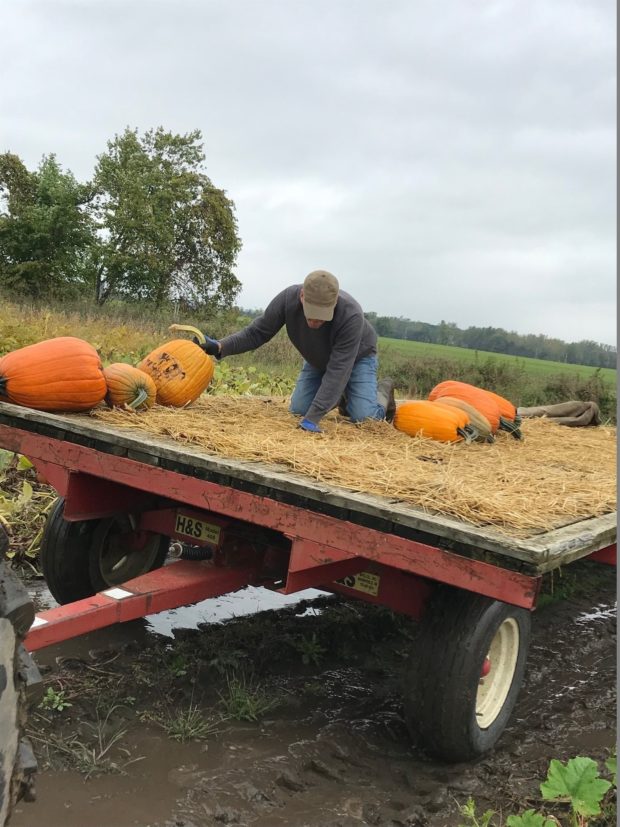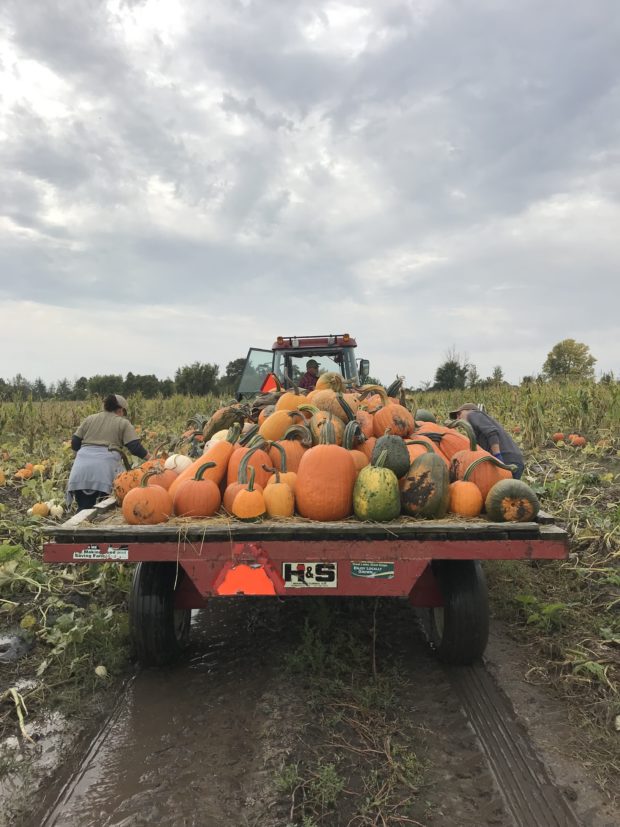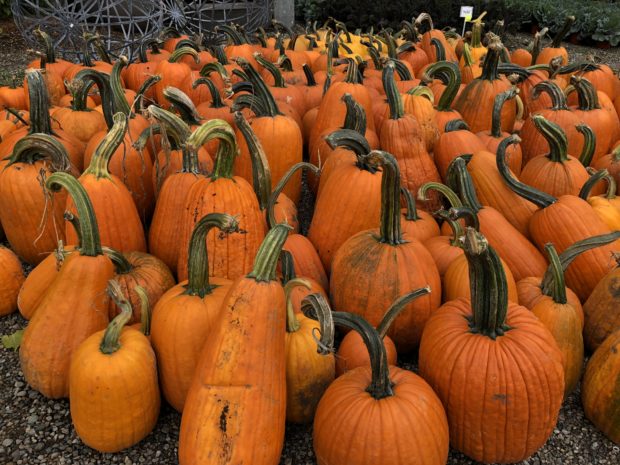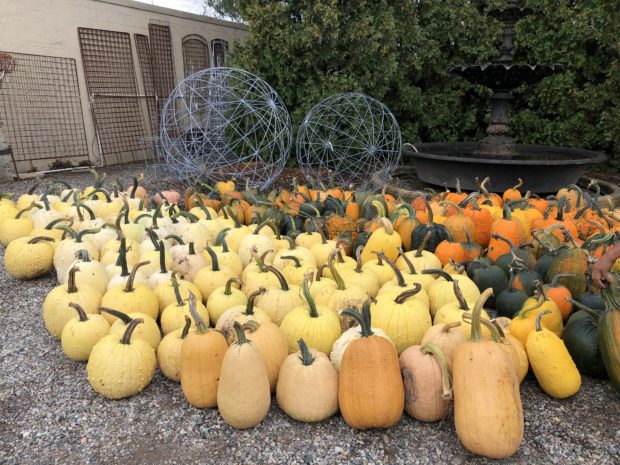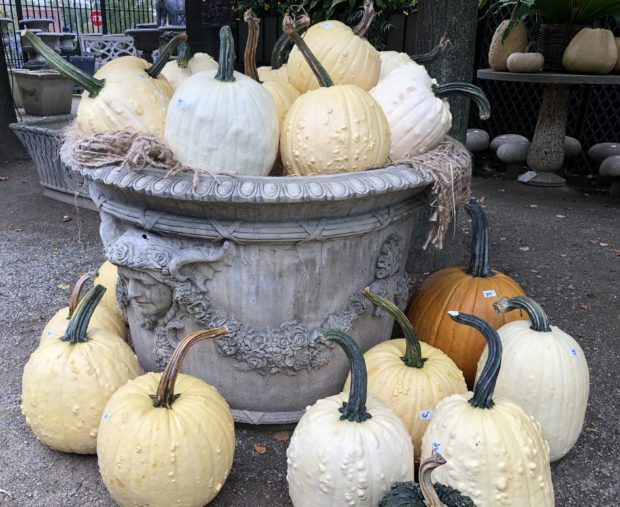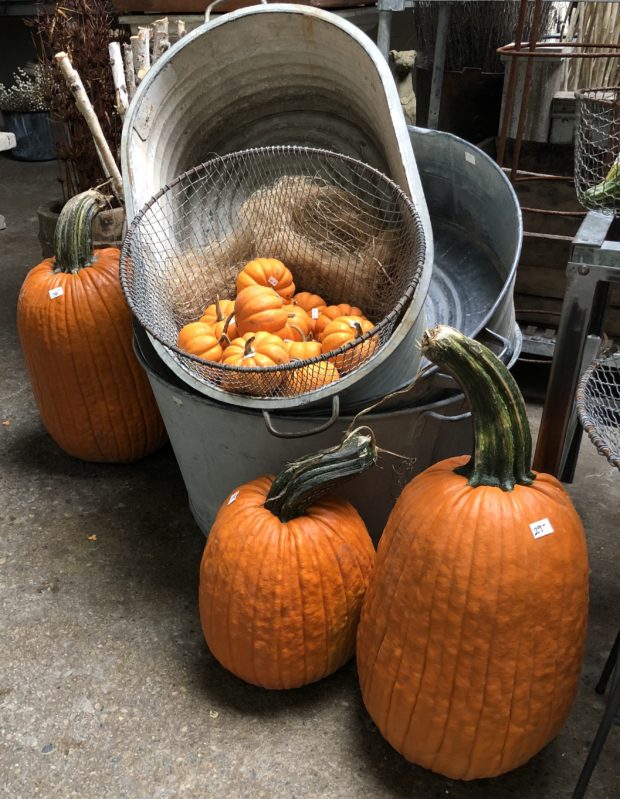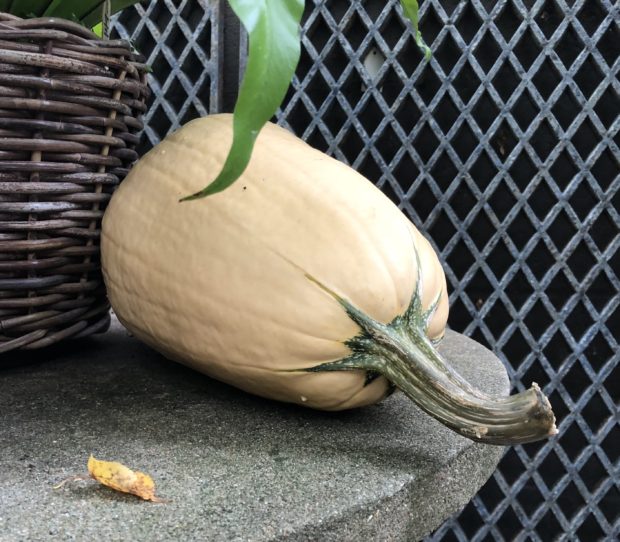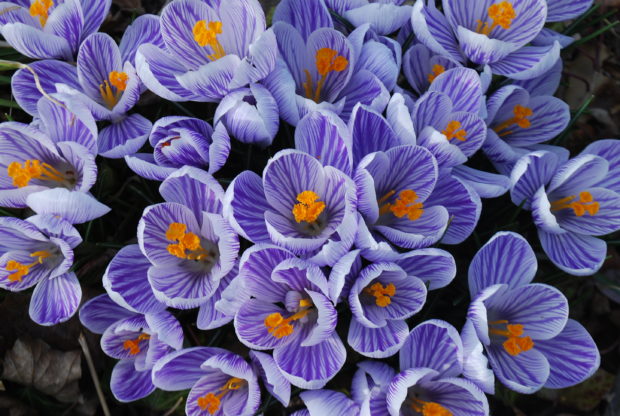 Eleven years ago, on April 1 of 2009, I published my very first Dirt Simple blog post, appropriately entitled “Vernissage”.The title of the post was my very loose interpretation of the French word that refers to openings. As much as it signaled the opening of my gardening season, it was a very special beginning for me. I published on this date the first journal style blog essay focused on garden and landscape design under the name of Dirt Simple. To date I have published 1716 essays. Some are good, some are OK. Some are fun, and others I hope are challenging. You decide. But I have thoroughly enjoyed the process of organizing my thoughts, and writing them down in some in some coherent form. Every moment that I have spent photographing gardens, landscape projects, and plants for this column has been time in the garden that has made me slow down, observe and reflect. More recently, my posts are longer, and more detailed-and fewer. I write when I think I have something to say. The older I get, the less I have to say – which seems appropriate. I am vastly less certain of almost everything than I was when I was 30. To follow is a revisited, rethought, and revised version of my first post in 2009, annotated in 2010, 2012, 2014, 2015, 2016, 2017, and today-April 1 of 2020. I must have been speechless in 2019-if you write, you know that happens. This date has another very special significance to me. April 1 of 1992 was Rob’s first day working with me. It has been a very engaging and productive 28 years. Yes, we have had our rough moments, but I take a great deal of pride in what we have created. I have a respect for him that continues to grow. I feel sure there will be more to come from the two of us.
Eleven years ago, on April 1 of 2009, I published my very first Dirt Simple blog post, appropriately entitled “Vernissage”.The title of the post was my very loose interpretation of the French word that refers to openings. As much as it signaled the opening of my gardening season, it was a very special beginning for me. I published on this date the first journal style blog essay focused on garden and landscape design under the name of Dirt Simple. To date I have published 1716 essays. Some are good, some are OK. Some are fun, and others I hope are challenging. You decide. But I have thoroughly enjoyed the process of organizing my thoughts, and writing them down in some in some coherent form. Every moment that I have spent photographing gardens, landscape projects, and plants for this column has been time in the garden that has made me slow down, observe and reflect. More recently, my posts are longer, and more detailed-and fewer. I write when I think I have something to say. The older I get, the less I have to say – which seems appropriate. I am vastly less certain of almost everything than I was when I was 30. To follow is a revisited, rethought, and revised version of my first post in 2009, annotated in 2010, 2012, 2014, 2015, 2016, 2017, and today-April 1 of 2020. I must have been speechless in 2019-if you write, you know that happens. This date has another very special significance to me. April 1 of 1992 was Rob’s first day working with me. It has been a very engaging and productive 28 years. Yes, we have had our rough moments, but I take a great deal of pride in what we have created. I have a respect for him that continues to grow. I feel sure there will be more to come from the two of us.
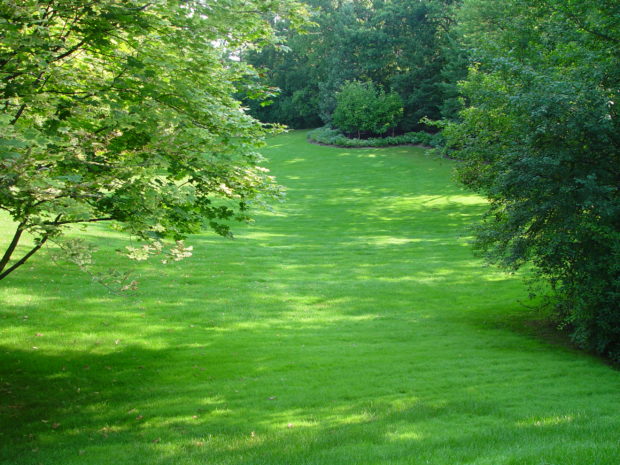 Strictly speaking, the French word vernissage refers to the opening of an art exhibition. I learned the word 23 years ago from a client with whom I had a history spanning better than 25 years. She was an art collector. Our conversation over the years spoke to the value of nurturing long term interests and commitments in the landscape. I learned plenty from her, and from her garden, over the years. In the beginning, I planted flowers for her. Our relationship developed such that I began to redesign, reshape, and replant her landscape. She was passionately involved in the disposition of every square foot of her 8 acre property. The years flew by, from one project to the next. I have favorite projects. An edited collection of fine white peony cultivars dating from the late 19th and early 20th century was exciting to research and plant. A grove of magnolia denudata “Ivory Chalice” came a few years later. Another year we completely regraded all of the land devoted to lawn, and regrassed. I learned how to operate a bulldozer, I so wanted to be an intimate and hands on part of the sculpting of the ground. We had a relationship that I still treasure.
Strictly speaking, the French word vernissage refers to the opening of an art exhibition. I learned the word 23 years ago from a client with whom I had a history spanning better than 25 years. She was an art collector. Our conversation over the years spoke to the value of nurturing long term interests and commitments in the landscape. I learned plenty from her, and from her garden, over the years. In the beginning, I planted flowers for her. Our relationship developed such that I began to redesign, reshape, and replant her landscape. She was passionately involved in the disposition of every square foot of her 8 acre property. The years flew by, from one project to the next. I have favorite projects. An edited collection of fine white peony cultivars dating from the late 19th and early 20th century was exciting to research and plant. A grove of magnolia denudata “Ivory Chalice” came a few years later. Another year we completely regraded all of the land devoted to lawn, and regrassed. I learned how to operate a bulldozer, I so wanted to be an intimate and hands on part of the sculpting of the ground. We had a relationship that I still treasure.
 There were disasters to cope with, as in the loss of an enormous old American elm. Deterring deer became nearly a full time job. Nature is like that. As mean as it is giving. Spring would invariably bring or suggest something new. All these years later, there is a body of work generated by the two of us that I call the landscape – that living and breathing discussion about nature that draws every gardener closer to the knowledge that life is equal parts mystery and miracle.
There were disasters to cope with, as in the loss of an enormous old American elm. Deterring deer became nearly a full time job. Nature is like that. As mean as it is giving. Spring would invariably bring or suggest something new. All these years later, there is a body of work generated by the two of us that I call the landscape – that living and breathing discussion about nature that draws every gardener closer to the knowledge that life is equal parts mystery and miracle.
 She sold this property some years ago. Change comes sooner or later to people and gardens alike. The landscape of her new and much smaller property was a design challenge for the both of us. That new landscape was all about a conversation about letting go of what had brought her so much pleasure, and embracing the challenges posed by starting over. Making that move with her from one large landscape to a city lot landscape was just plain hard. That transition was not pretty for either of us. I am sorry to say that we broke up over the stress of this move. I am sure she felt just as bad about it as I did. I ran in to her some years later. We talked up a storm, as if nothing untoward had ever happened. This treasured client passed away September 20, 2017, at the age of 86. It was more than hard for me to bid her farewell. I will never forget her. She encouraged me to be the best that I could be. She trusted my eye, and I loved hers. The following is in sincere regard, love, and respect for Marianne.
She sold this property some years ago. Change comes sooner or later to people and gardens alike. The landscape of her new and much smaller property was a design challenge for the both of us. That new landscape was all about a conversation about letting go of what had brought her so much pleasure, and embracing the challenges posed by starting over. Making that move with her from one large landscape to a city lot landscape was just plain hard. That transition was not pretty for either of us. I am sorry to say that we broke up over the stress of this move. I am sure she felt just as bad about it as I did. I ran in to her some years later. We talked up a storm, as if nothing untoward had ever happened. This treasured client passed away September 20, 2017, at the age of 86. It was more than hard for me to bid her farewell. I will never forget her. She encouraged me to be the best that I could be. She trusted my eye, and I loved hers. The following is in sincere regard, love, and respect for Marianne.
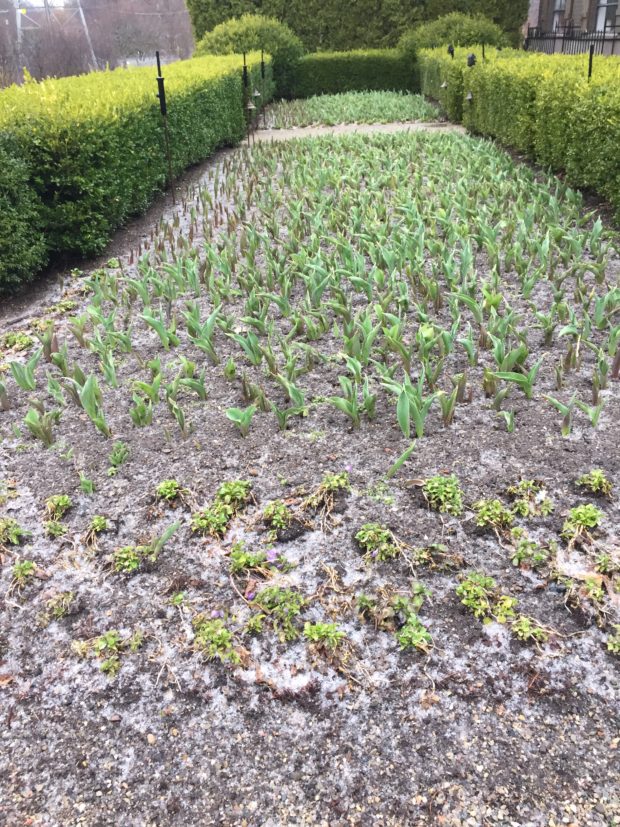 In a broader sense, vernissage might refer to any opening. The opening of the gardening season has a decidedly fresh ring to it. I routinely expect the winter season to turn to spring, and it always does, sooner or later. Every spring opening has its distinctive features. Some springs are notable for their icy debut. Grape hyacinths and daffodils ice coated and glittering and giant branches crashing to the ground-this is not so unusual. Snow can be very much a part of the landscape in mid April. This year is a challenge like no other to all. Gardening at its most distilled is in many ways a solitary pursuit. What gets shared post that high voltage one on one relationship is a wealth of information, interest, discussion and passion that I believe will transmit a love for the garden from one generation of gardeners to the next.
In a broader sense, vernissage might refer to any opening. The opening of the gardening season has a decidedly fresh ring to it. I routinely expect the winter season to turn to spring, and it always does, sooner or later. Every spring opening has its distinctive features. Some springs are notable for their icy debut. Grape hyacinths and daffodils ice coated and glittering and giant branches crashing to the ground-this is not so unusual. Snow can be very much a part of the landscape in mid April. This year is a challenge like no other to all. Gardening at its most distilled is in many ways a solitary pursuit. What gets shared post that high voltage one on one relationship is a wealth of information, interest, discussion and passion that I believe will transmit a love for the garden from one generation of gardeners to the next.
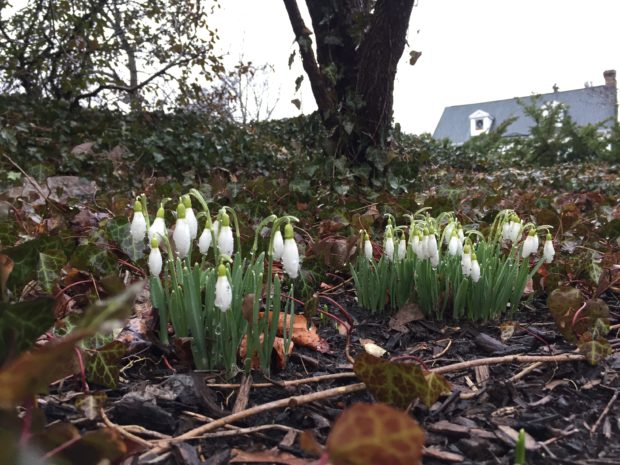 I usually associate spring with the singing of the birds. I hardly noticed the singing this year, until this past week. The cold that has been reluctant to leave means there has been much more anticipation than experience. I see a few small signs now. The snowdrops are in bloom, but they look bedraggled. The magnolia stellata is still silent. Perhaps there will be no flowers this year, but perhaps there will. To add to, revise, or reinvent my relationship with nature is a challenge I usually anticipate. It has been hard to rev up this time around. This persistent bad news reduces my spirit to a puddle on the ground. A client suggested yesterday that February had been steady at 30 degrees, and March seems to be in a a chilly and threatening holding pattern that could last for months. How well said. But truth be told, spring is finally within sight, in a chilly and miserly sort of way. Everywhere I see fat buds, waiting for that signal to proceed. I have hellebores in bloom. Thanks to the heavens for them. Spring is on the way.
I usually associate spring with the singing of the birds. I hardly noticed the singing this year, until this past week. The cold that has been reluctant to leave means there has been much more anticipation than experience. I see a few small signs now. The snowdrops are in bloom, but they look bedraggled. The magnolia stellata is still silent. Perhaps there will be no flowers this year, but perhaps there will. To add to, revise, or reinvent my relationship with nature is a challenge I usually anticipate. It has been hard to rev up this time around. This persistent bad news reduces my spirit to a puddle on the ground. A client suggested yesterday that February had been steady at 30 degrees, and March seems to be in a a chilly and threatening holding pattern that could last for months. How well said. But truth be told, spring is finally within sight, in a chilly and miserly sort of way. Everywhere I see fat buds, waiting for that signal to proceed. I have hellebores in bloom. Thanks to the heavens for them. Spring is on the way.
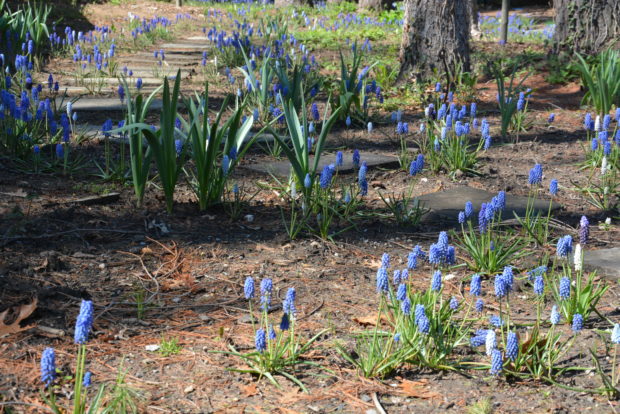 Much of what I love about landscape design has to do with the notion of second chances. I have an idea. I put it to paper. I do the work of installing it. Then I wait for an answer back. This is the most important part of my work-to be receptive to hearing what gets spoken back. The speeches come from everywhere-the design that could be better here and more finished there. The client, for whom something is not working well, chimes in. The weather, the placement and planting final exam test my knowledge and skill. The land whose form is beautiful but whose drainage is heinous teaches me a thing or two about good planning. The sky and the ground is in the process of opening up. The singing comes from everywhere. I make changes, and then more changes. I wait for this to grow in and that to mature. I stake up the arborvitae hedge gone over with ice, and know it will be years or more-the hoped for recovery. I might take this out, or move it elsewhere. That evolution of a garden seems to have ill defined beginnings, an uncertain mid ground, and an equally ill defined end.
Much of what I love about landscape design has to do with the notion of second chances. I have an idea. I put it to paper. I do the work of installing it. Then I wait for an answer back. This is the most important part of my work-to be receptive to hearing what gets spoken back. The speeches come from everywhere-the design that could be better here and more finished there. The client, for whom something is not working well, chimes in. The weather, the placement and planting final exam test my knowledge and skill. The land whose form is beautiful but whose drainage is heinous teaches me a thing or two about good planning. The sky and the ground is in the process of opening up. The singing comes from everywhere. I make changes, and then more changes. I wait for this to grow in and that to mature. I stake up the arborvitae hedge gone over with ice, and know it will be years or more-the hoped for recovery. I might take this out, or move it elsewhere. That evolution of a garden seems to have ill defined beginnings, an uncertain mid ground, and an equally ill defined end.
 This spring will see an average share of burned evergreen and dead shrubs. The winter cold and wind was neither here nor there. I am still wearing winter clothes. But no matter what the last season dished out, sooner or later, I get my spring. I can compost my transgressions. The sun shines on the good things, and the not so good things, equally. It is my choice to take my chances, and renew my interest. The birds singing this first day of April l means it is time to take stock.
This spring will see an average share of burned evergreen and dead shrubs. The winter cold and wind was neither here nor there. I am still wearing winter clothes. But no matter what the last season dished out, sooner or later, I get my spring. I can compost my transgressions. The sun shines on the good things, and the not so good things, equally. It is my choice to take my chances, and renew my interest. The birds singing this first day of April l means it is time to take stock.
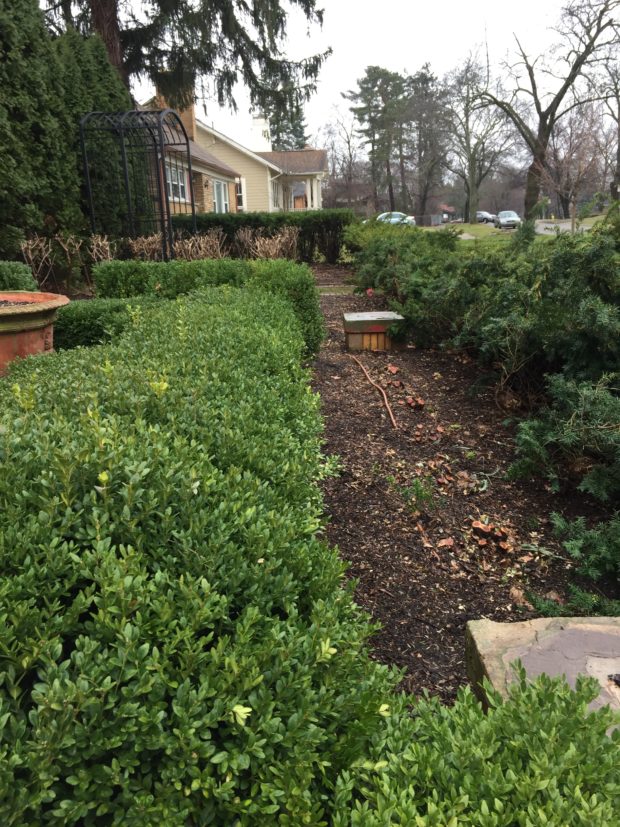 I can clean up winter’s debris. My eye can be fresh, if I am of a mind to be fresh. I can coax or stake what the heavy snow crushed. I can prune back the shrubs damaged by the voles eating the bark. I can trim the sunburn from the yews and the boxwood. I can replace what needs replacing, or rethink an area all together. Three years ago I removed 100 Hicks yews that have been in my garden for close to 20 years. They have been ailing for years in a way that defied any remedy. I now have 60 feet of planter boxes, that will be mine to plant for a third season. It is unclear when I will be able to plant, but I have hope. I can look over what I did the first time, and make changes. I can wait. Being a gardener, I know all about waiting. A pair of new arbors installed over a year ago hold roses, clematis and Dutchman’s Pipe. I see buds on those plants. I can sit in the early spring sun, and soak up the possibilities. I can sculpt ground. I can move all manner of soil, plant seeds, renovate, plant new. What I have learned can leaven the ground under my feet-if I let it. Spring will scoop me up. Does this not sound good?
I can clean up winter’s debris. My eye can be fresh, if I am of a mind to be fresh. I can coax or stake what the heavy snow crushed. I can prune back the shrubs damaged by the voles eating the bark. I can trim the sunburn from the yews and the boxwood. I can replace what needs replacing, or rethink an area all together. Three years ago I removed 100 Hicks yews that have been in my garden for close to 20 years. They have been ailing for years in a way that defied any remedy. I now have 60 feet of planter boxes, that will be mine to plant for a third season. It is unclear when I will be able to plant, but I have hope. I can look over what I did the first time, and make changes. I can wait. Being a gardener, I know all about waiting. A pair of new arbors installed over a year ago hold roses, clematis and Dutchman’s Pipe. I see buds on those plants. I can sit in the early spring sun, and soak up the possibilities. I can sculpt ground. I can move all manner of soil, plant seeds, renovate, plant new. What I have learned can leaven the ground under my feet-if I let it. Spring will scoop me up. Does this not sound good?
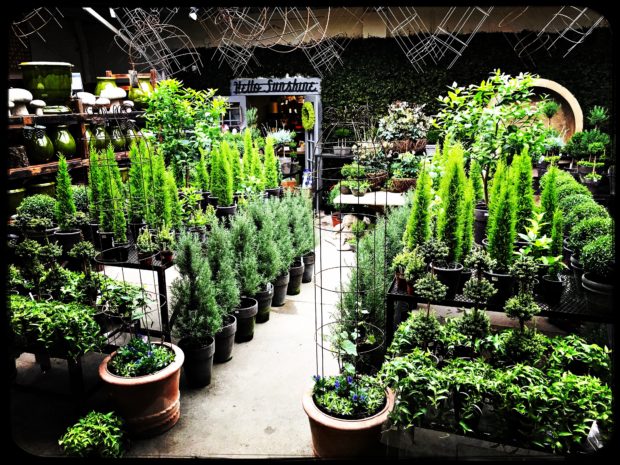 April 1 marked 28 years that Rob and I began working together, and 24 years that the shop has been bringing our version of the garden to all manner of interested gardeners. That relationship endures, and evolves. Suffice it to say that Detroit Garden Works is an invention from the two of us that reflects the length and the depth of our mutual interest in the garden. In 1996, our shop was a one of a kind. We plan to keep it that way. No matter how hard the winter, no matter how hard the news, once we smell spring in the air, we stir.
April 1 marked 28 years that Rob and I began working together, and 24 years that the shop has been bringing our version of the garden to all manner of interested gardeners. That relationship endures, and evolves. Suffice it to say that Detroit Garden Works is an invention from the two of us that reflects the length and the depth of our mutual interest in the garden. In 1996, our shop was a one of a kind. We plan to keep it that way. No matter how hard the winter, no matter how hard the news, once we smell spring in the air, we stir.
 Our shop is in lockdown, like countless other garden businesses – as well we should be. We will meet again over the garden when it is safe for all of us to do so. In the interim, I would point out that spring is on the way, as usual. Just walk outside. You will see, smell, and hear it. As for the time being, persevere.
Our shop is in lockdown, like countless other garden businesses – as well we should be. We will meet again over the garden when it is safe for all of us to do so. In the interim, I would point out that spring is on the way, as usual. Just walk outside. You will see, smell, and hear it. As for the time being, persevere.
 Detroit Garden Works March 31 2020
Detroit Garden Works March 31 2020
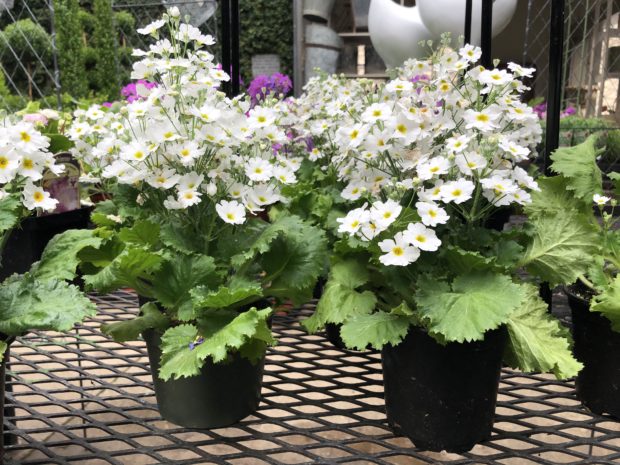 primula malacoides in bloom March 31, 2020
primula malacoides in bloom March 31, 2020
 Rob planted a series of pots for spring a month ago. Of course he did. It’s spring.
Rob planted a series of pots for spring a month ago. Of course he did. It’s spring.
